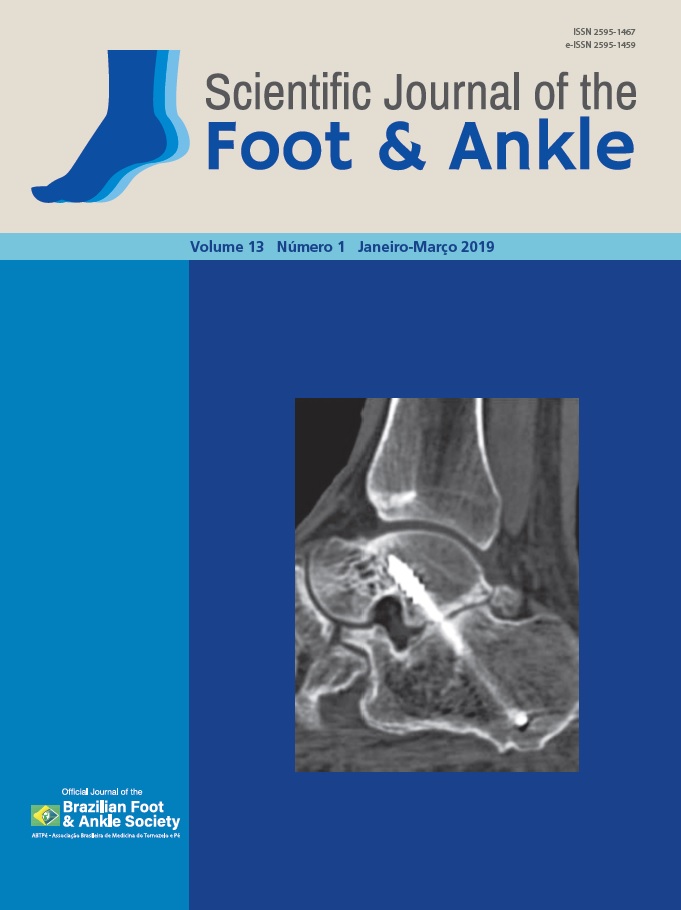Posterior ankle impingement syndrome in athletes
surgical outcomes of a case series
DOI:
https://doi.org/10.30795/scijfootankle.2019.v13.887Keywords:
Arthroscopy, Ankle, Athletic injuries, Ankle injuriesAbstract
Objective: This study sought to evaluate the results of 10 athletes diagnosed with posterior ankle impingement syndrome (PAIS) treated with arthroscopy between 2016 and 2017 by the Sports Traumatology Center of our University. Methods: Patients were evaluated with regard to the presence of associated lesions, the etiology of PAIS, and treatment outcomes using a visual analog scale (VAS) and the American Foot and Ankle Society (AOFAS) scores. All cases were treated using an arthroscopic approach to the posterior ankle. Results: Six patients presented with ankle instability and were treated with Brostrom-Gould ligament repair as an adjuvant procedure. One patient had sinus tarsi syndrome, and this space was debrided. Injury of the peroneus brevis tendon was identified in two cases, and Achilles tendinopathy was identified in one individual. Only three patients did not receive adjuvant treatment. During surgery, five cases of trigonal processes, three cases of Stieda process, one case of hallux saltans, and one case of accessory ossicle of the fibula were identified as the causes of the impingement. The mean VAS score was 1.28 (0.6-2.5), and the mean AOFAS score was 88.6 (72-100). No complications were reported. Conclusion: Arthroscopic resection of the cause of the impingement, alone or in combination with the treatment of secondary conditions, was used to effectively treat pain and reestablish function. Level of Evidence IV; Therapeutic Studies; Case series.




